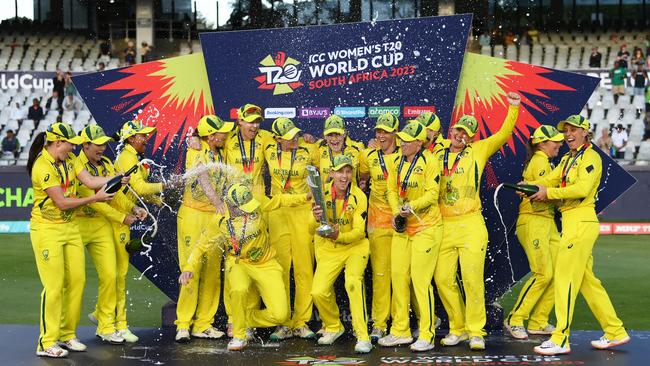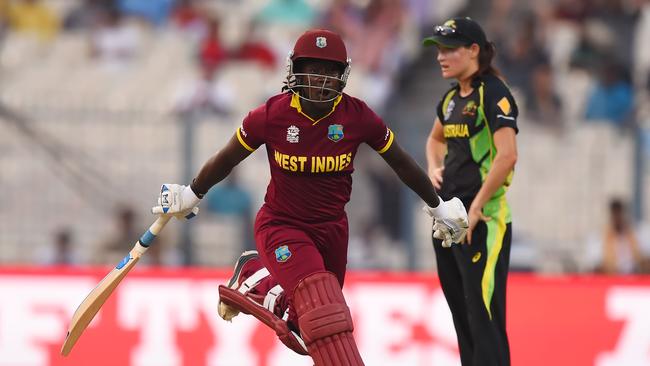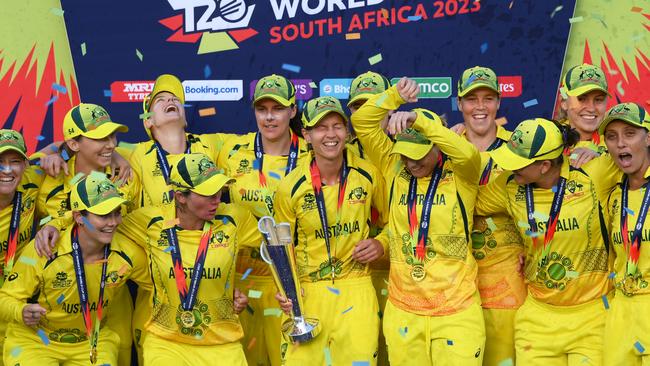Why Australia’s defending T20 champions must overcome the rise of the challengers
No other team has dominated their sport for such a long period. Australia head into this tournament as three-time defending champions – but be warned, the world order could be about to change.

If I simply mention April 3, 2016, Kolkata to you as a cricket fan, chances are we’ll both in unison yell, “Remember the name …” doing our best Ian Bishop voices. For, that was indeed the day Carlos Brathwaite announced himself to the world by smashing Ben Stokes for four straight sixes in one of the more dramatic nights in cricket history at the Eden Gardens. It also resulted in West Indies winning their second men’s T20 World Cup crown.
Darren Sammy and his team though were only following up on what their female counterparts had achieved only a few hours earlier at the same venue. Even if unfortunately, it got overshadowed by Brathwaite’s heroics. But if anything, what the West Indian women had done that afternoon was more significant. They had overcome the might of Australia and dethroned the three-time T20 defending champions in incredible fashion.
There was hope in the air that there might be some parity in the women’s cricket world. When Stafanie Taylor lifted the trophy, it wasn’t so much about the rise of the West Indies women’s team. But a statement that the Australians were no longer indomitable. That the rest of the world had finally caught up.
It was also an Australian team in transition. Meg Lanning, Alyssa Healy and Ellyse Perry were still in their mid-20s while Beth Mooney and Megan Schutt were very early into their international careers. What would the future hold for them?
Well, here we are eight years later, with the Australians entering another T20 World Cup as three-time defending champions. It’s difficult to argue with those who recall that result in April 2016 as simply a bad day at the office for the greatest team of all time. And not the rise of the challengers.

You simply have to look at the comprehensive fashion in which they’ve managed to win their last three titles, with South Africa having run them the closest, relatively speaking, 18 months ago on home soil. Rarely have the Aussies been even threatened to be honest during any of those tournaments, losing only two out of 18 matches across three T20 World Cups, both league encounters to India.
And it is India who have in recent years emerged as the biggest threat to wrest the world title away from the Aussies, even reaching the final at the MCG back in 2020. But like with the Indians on that famous night in Melbourne, with Katy Perry providing the soundtrack, England in 2018 and South Africa in 2023 never really looked up for it when faced with the prospect of getting over the biggest obstacle.
So, why is it that so many neutral fans are hoping for this time that Australia’s run is stopped and that they don’t walk away with their fourth straight title. To start with, whether it’s pro-wrestling or Hollywood, the chase is generally a better narrative to get behind. The underdog is a lot more fun to back. The end of a mighty reign a bigger story.
And there are those who believe that the time is finally here for there to be a genuine uprising in terms of challenging Australia’s hold on the T20 trophy. That the rest of the pack is no longer lagging behind but is at the cusp.
Just for the record, Australia have lost five out of 18 T20Is since the past World Cup. They went into the past World Cup with two losses and a tie in 21 games and an even better record going into the 2018 edition in the Caribbean.

But for once, it’s perhaps lesser to do with what Australia have been doing in the interim and more about what the other teams have managed to do in terms of closing the gap.
For more than a decade, Australia were not only stronger, faster and quicker than everyone else, they also had the best facilities, the better pay and the perfect platform to be the best.
Since 2018, there are 104 official countries/teams playing T20I cricket, the number having grown from 18 six years ago. So it’s safe to say the scope has expanded massively. More importantly, though, the investment into women’s cricket in many of the other countries has also grown substantially. In India and England especially.
Australia were the pioneers in terms of pay equity, but now the Indian women are paid as much as the men in terms of match fees, courtesy the BCCI. About time, many would say too. To put it into context, that was a 500 per cent pay hike for national women’s cricketers in India.
A big change in the ecosystem of women’s cricket globally since the last World Cup is also the emergence of the Women’s Premier League (WPL) in India.
And while that has meant the best players being attracted to come and play in and with the domestic talents of India, it’s also made the younger lot of Indian cricketers a lot more confident about their place on the world stage. Much like the IPL did for the Indian men, including the removal of the fear of failure.
There are great signs on the field too, and not just with India. England have set upon a Bazball-ish approach to their T20I cricket under Jon Lewis, who was part of Brendon McCullum’s setup. Pakistan have done the same, and you could see glimpses of that in their win over Sri Lanka on the opening night of the tournament.
Almost every contender for the title is scoring at a minimum of 1.5 runs quicker than they were in the previous cycle. Australia themselves have failed to defend big totals, with the West Indies chasing down a 200+ total on Australian soil earlier this year. Others like Sri Lanka have upped their game beyond measure, having recently won the Asia Cup. The redoubtable Chamari Athapaththu has smashed nearly as many sixes as the entire Australian team in the last 18 months.

But this is still Australia, and no other team, male or female, has dominated their sport as much as Healy, Perry, Mooney and the rest have for such a long period.
And if the signs are true, and there indeed will be a team that knocks Australia off the perch in the UAE, it won’t feel like just an aberration but truly the end of an era and the start of a new chapter in women’s T20I cricket.







To join the conversation, please log in. Don't have an account? Register
Join the conversation, you are commenting as Logout